Introduction
Central challenges in nanotechnology are manipulating nanoscale objects without irreversible stiction and imaging electrical properties on the nanoscale. Atomic force microscopy has proved to be a useful technique for these tasks but is limited by the long range of the electrostatic interaction. We have developed techniques to readily fabricate coaxial and triaxial AFM probes that create strong and localized electric fields at their tip. We have used such tips for exploring many facets of imaging and manipulating materials on the nanoscale. This figure shows SEM images of a coaxial probe with an insulating layer of 20-50 nm. Such a probe is very useful for high resolution electrostatic force microscopy
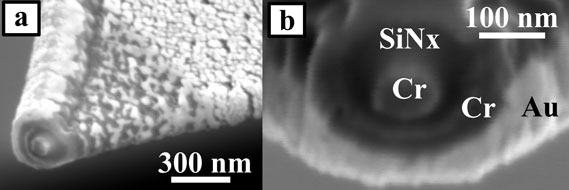
Imaging and Manipulating with Dielectrophoresis (DEP)
Coaxial probes can image and manipulate materials with dielectrophoresis. The following figure depicts the improvement possible when imaging silica microspheres with dielectrophoresis.
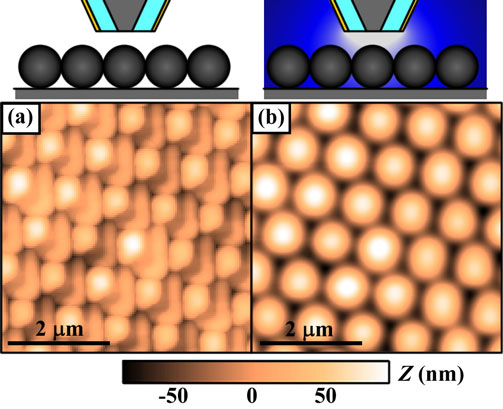
Brown, K. A., Berezovsky, J., & Westervelt R.M., Coaxial atomic force microscope probes for imaging with dielectrophoresis. Submitted to Applied Physics Letters.
In addition, coaxial probes can be used to pick-and-place microscale objects, as shown here.

Brown, K. A., Aguilar, J. A. & Westervelt, R. M. Coaxial atomic force microscope tweezers. Applied Physics Letters 96, 3 (2010).
Triaxial Probes for Non-contact Trapping with negative Dielectrophoresis
As particles get smaller, it becomes increasingly difficult to remove them from surfaces, therefore non-contact trapping methodologies become necessary. Triaxial probes create an electric field zero that can be used to hold particles away from their surface with negative DEP.
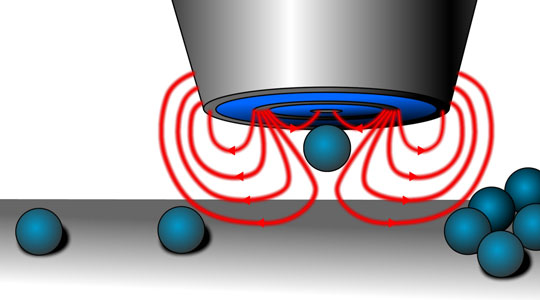
The position and size of the minima may be moved by adjusting the control voltages, making triaxial probes act as a nanoscale hand.
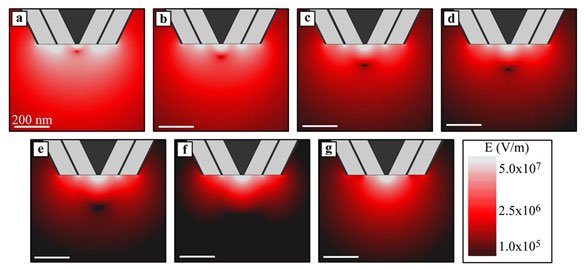
Brown, K. A. & Westervelt, R. M. Proposed triaxial atomic force microscope contact-free tweezers for nanoassembly. Nanotechnology 20, 385302 (2009).
We have recently constructed triaxial probes and successfully trapped single nanoscale particles.
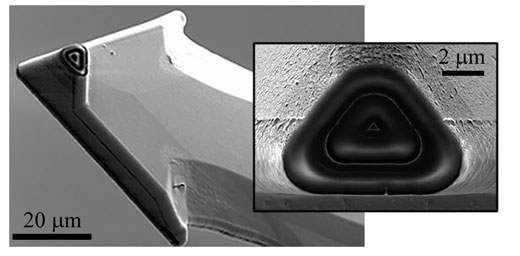
 Harvard
Harvard
 Harvard SEAS
Harvard SEAS
 Harvard Physics
Harvard Physics
 Harvard
Harvard
 Harvard SEAS
Harvard SEAS
 Harvard Physics
Harvard Physics
 Westervelt Group 2016 | webmaster: Sagar Bhandari
Westervelt Group 2016 | webmaster: Sagar Bhandari